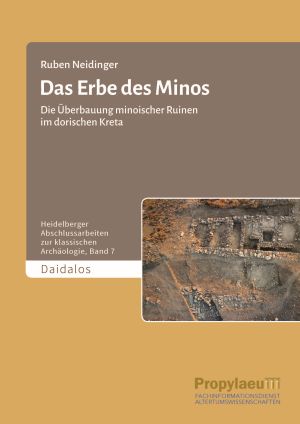Neidinger, Ruben
Das Erbe des Minos: Die Überbauung minoischer Ruinen im dorischen Kreta
Ever since the discovery of the palace of Knossos by Arthur Evans the interest of archaeological scholars in the island of Crete has always focused on the civilization of the Minoans in the Bronze Age. The succeeding periods from the early Iron Age until the time of the Roman Empire have been until recently researched less intensive. This is also true because these succeeding time periods produced rather less spectacular architectural evidence than other regions of the Greek world, when Crete no longer played a major role in Greek history. As a result, architectural features from later phases resting on top of Bronze Age structures have always received less attention. This study intends to close the gap and will bring together all the evidence, where Minoan architecture was paved over by later buildings between the early Iron Age and Roman times, showing all the relevant sites in a single overview for the first time. It will show that most of the Minoan structures were built over in the Geometric-Archaic and the Hellenistic times, with a few Roman examples that might be historically significant. The study tries to put this evidence into the context of the historical evolution of the island throughout antiquity and to prove that many of the Minoan sites were built over for a specific reason. Especially the sanctuaries in the hinterland might indicate that the Greek inhabitants wanted to lay a claim on certain territories. In the case of the re-settled palaces the study also wants to consider the role played by the myths about King Minos on Crete. Whether or not these architectural activities might indicate the Dorian Cretans considered the long forgotten Minoan civilization as their ancestors is also part of the study´s discussion.







